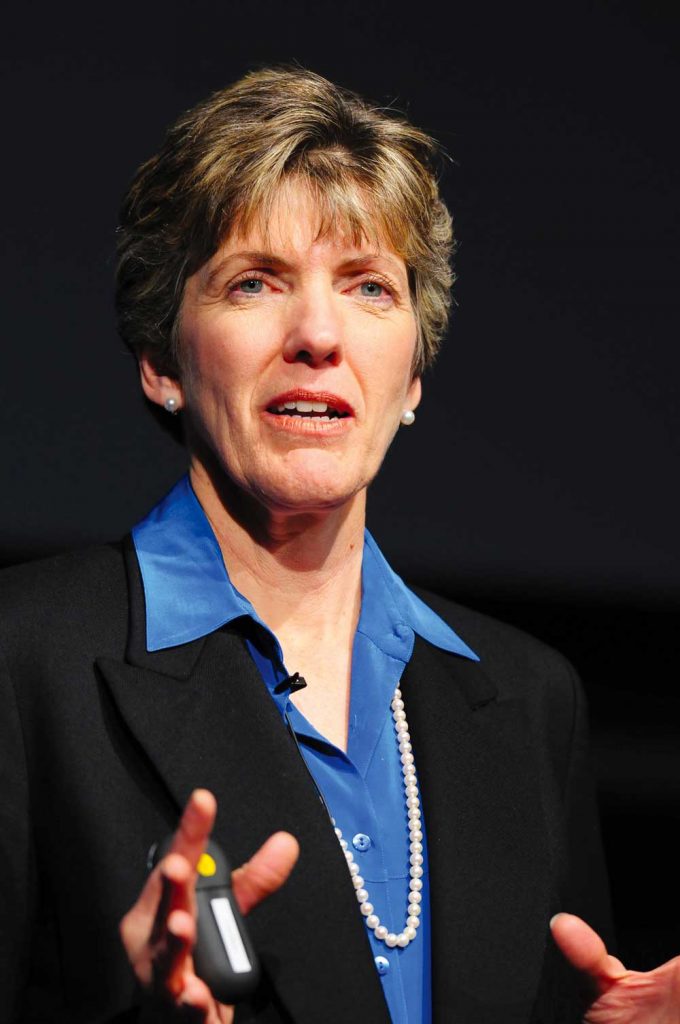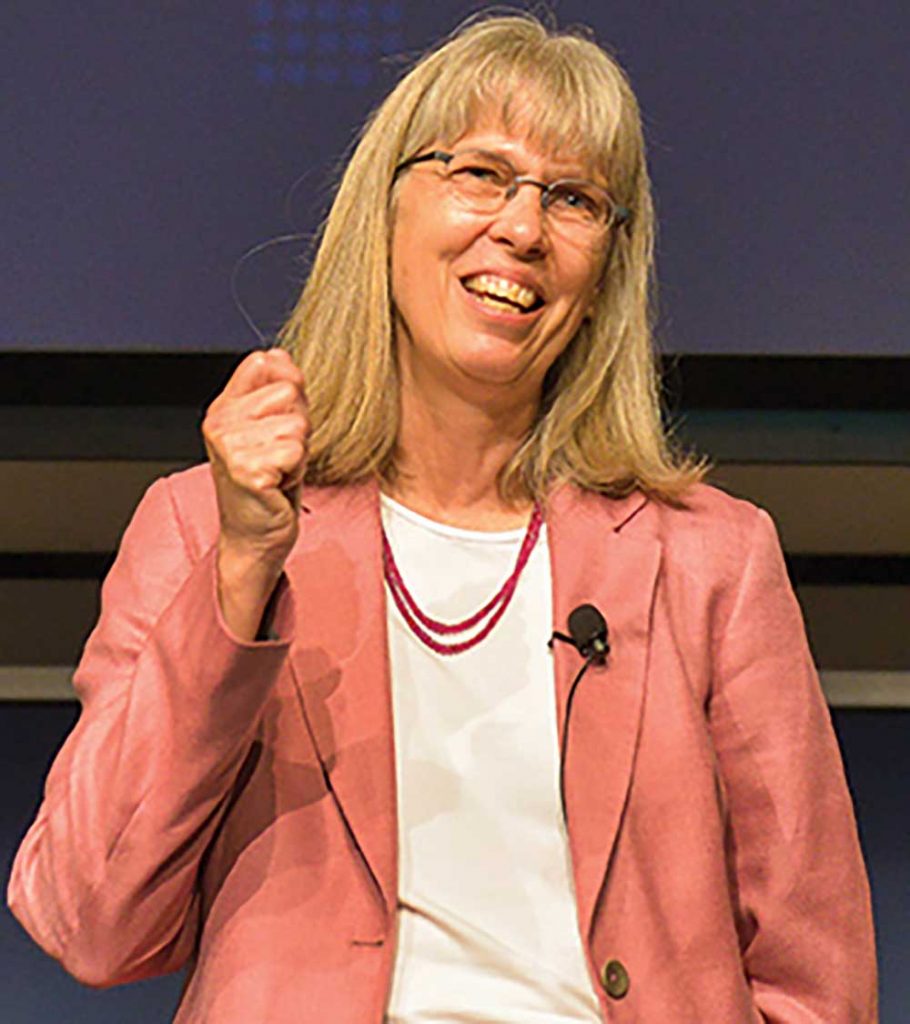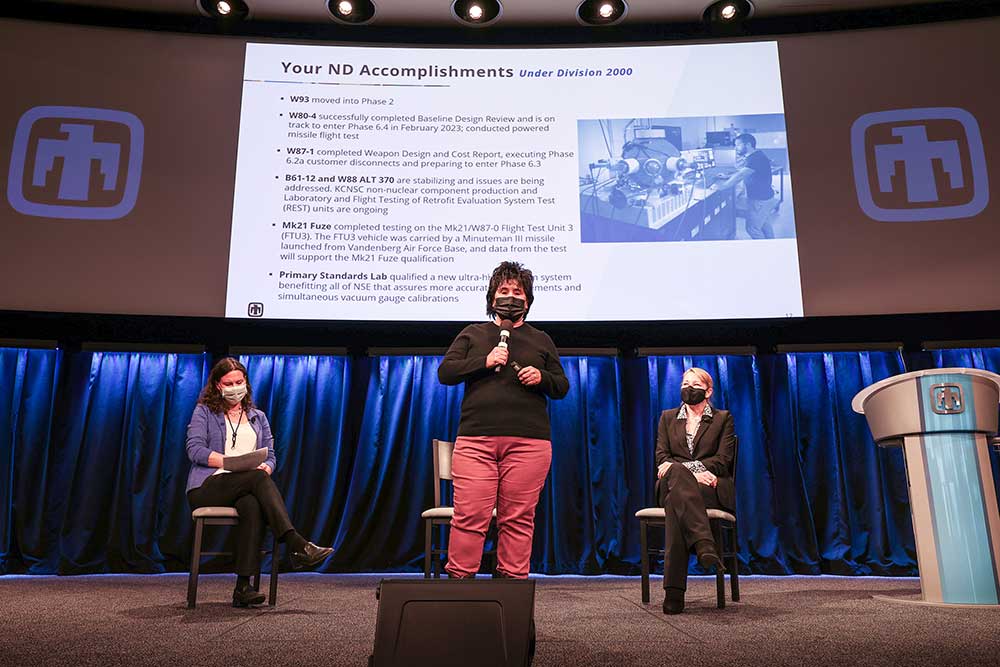
In a 1958 Lab News story about women in supervisor roles, the lead sentence read: “Blond or brunette, single or grandmother, high school graduate or holder of a college degree, the women pictured here have one thing in common — they’re among Sandia Corporation’s 20 women supervisors.”
In the last 66 years, Sandia has made progress. First, Lab News no longer refers to women’s hair color or marital status when focusing on their professional accomplishments. Second, the number of women in the workforce and in management has increased over the last several decades. Today, 32% of Labs managers are women.
Moving up the ladder
The 20 women supervisors featured in the 1958 story were section supervisors, which was the lowest level of management at the time. Of those, only two were in technical positions; the rest worked in general or administrative roles. This was on par with the times, as most women working in that era were employed in clerical, teaching and sales jobs.

There were exceptions of course, even at the Labs, which employed a handful of women scientists. However, it wasn’t until 1972, that one of those scientists worked their way up to management.
Ruth Whan worked at the Labs for 10 years as a physicist in radiation and rad hardening before she was promoted to supervisor of the Materials Analysis Division. She was the first female to be named division supervisor, which was a level above section supervisor. Six years later, Whan would be promoted to department manager of the Chemistry and Materials Characterization Department.
Women rising to power

In 1981, Sandia California saw its first female division supervisor when Carol Verity was named supervisor of the Benefits, Medical and EEO Division. The following year, Joan Woodard was promoted to supervisor of the Solar Programs Division, also based in Livermore.
Woodard moved to Albuquerque in 1988. Two years later, she would become the first woman in a center director role when she was named director of Environmental and Manufacturing R&D Programs.
“Joan pushed hard to elevate women in the workforce and in management,” Labs historian Rebecca Ullrich said. “Dori Ellis, who came up behind Joan in management, was also a big advocate.”
Together, Woodard and Ellis focused their efforts on improving working conditions for women at Sandia as well as recruiting women engineers to join the Labs.
In 1999, Woodard made history again after she became the first female executive vice president of the Labs, a role now known as associate Labs director.
Women in Technical Management Project

As more women were promoted, the voices calling out issues that women were facing grew louder.
“Something is going on, making it difficult for many women to be successful in management positions,” read a Lab News article published in March 2000.
The article focused on the findings of the Women in Technical Management Project, an initiative launched two years earlier by Woodard and Ombuds Wendall Jones.
Not surprisingly, the project found that female managers who had been mentored and coached in a supportive environment were able to thrive, while those without similar support reported several problems and many would eventually step down. Women at that time were reclassified out of management at four times the rate of men.
The project also revealed that salaries of female technical managers and female technical staff were “slightly below their male counterparts.”
According to the article, Labs leadership “didn’t have a sense of the magnitude of the problem” until Woodard and the team presented the project’s findings.
These findings prompted the Labs to increase coaching and mentorship available to female managers and organize various networking workshops and conferences geared toward women in management.
In February 2010, Woodard announced her retirement. In a Lab News article celebrating her career, she spoke of the Labs efforts to improve conditions for working women, specifically policies that support working mothers. Of particular concern were child care, increased time off after childbirth, and accommodating part-time hours and telecommuting as alternatives for mothers.

Woodard also raised the importance of having women in management as it “helps provide alternative viewpoints in solving problems and an understanding ear to the problems of women and minorities.”
Sandia’s first female Labs director
Five years after Woodard retired, Jill Hruby would make history as the first woman to be named Labs director, as well as the first woman ever to head a U.S. nuclear weapons lab.
During a news conference with local media, Jill told reporters, “Sandia started on this path a long time ago. The Labs has long welcomed diversity and inclusion and has been a leader in hiring and developing diverse talent. That paid off for Sandia being the first to hire a female director. I am thankful to the leaders who gave me a chance.”
The women in charge of weapons
In 2022, Rebecca was watching a nuclear deterrence all hands meeting. “I was multitasking, emailing, doing whatever else at the same time, and suddenly I noticed it was three women on stage,” Rebecca said.

Rebecca has been at the Labs since 1994, working through an evolving landscape of women in the workforce. Through ups and downs, steps forward and steps back, the work is far from complete, but what Rebecca saw on stage stopped her in her tracks.
“I’m looking at my screen and see Michelle Stevens, who was standing in for Steve Girrens; Rita Gonzales; and Laura McGill on stage and I had to take a screenshot,” Rebecca said. “I’m thinking to myself, ‘Whoa. It’s all women in charge of weapons.’ It was just so striking in that moment. It felt huge.
“When you think of women as blondes or brunettes, you may not be able to see past that to their technical capabilities, but what I saw on that stage was proof of how far we’ve come, and I think it takes us to a place today where there is strong encouragement for moving forward.”